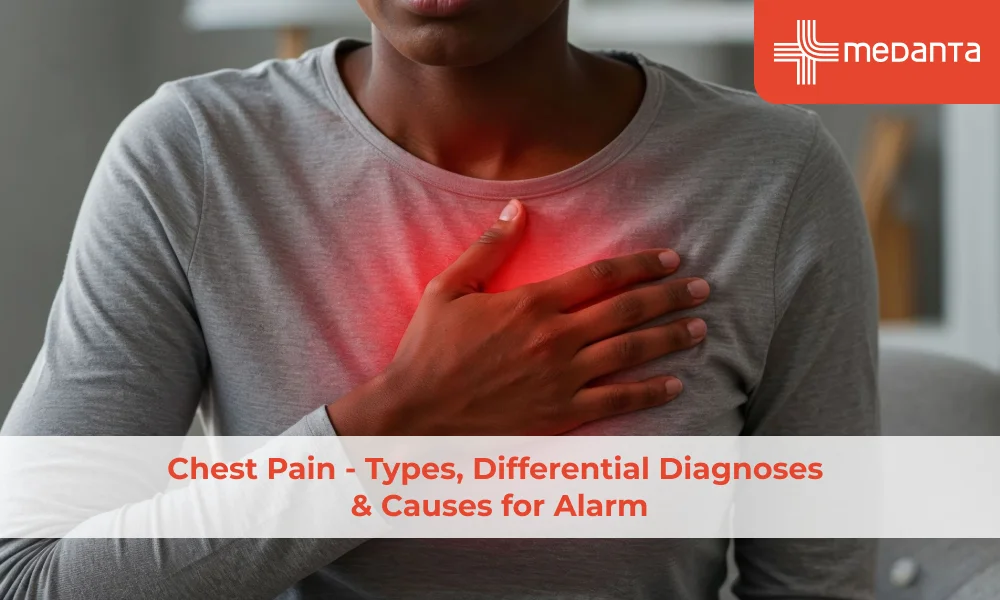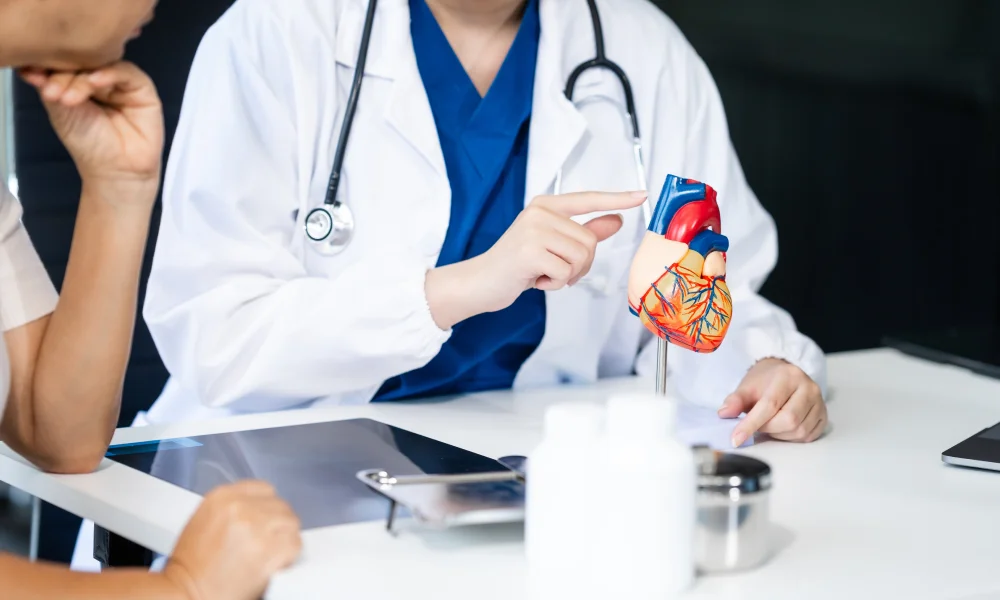Chest Pain - Types, Differential Diagnoses & Causes for Alarm

TABLE OF CONTENTS
The most common causes of chest pain are non-cardiac. But, it is essential not to miss out on cardiac pains because they can be life-threatening. Some non-cardiac causes like pulmonary embolism (clot in the lung) or pneumonia should not be ignored either.
What are the life-threatening or acute causes of chest pain?
Ischemic Heart Disease - Including angina, myocardial infarction, or acute coronary syndrome. In stable ischemic disease, the pain usually happens only with exertion and not at rest. The pain is continuous and severe in unstable disease or acute coronary syndrome. The pain is typically slow to start and slow to go. The pain is located over a wide area in the front of the chest, sometimes radiating to the left arm, neck, shoulder, or jaw. The pain is usually more on the left side of the chest.
Aortic dissection - A tear in the inner lining of the body’s main artery - the aorta. Usually, sudden, severe chest or upper back pain is described as a tearing or ripping sensation that spreads to the neck or down the back—usually accompanied by sudden stomach pain and symptoms, which may resemble a stroke.
Pneumothorax - Formation of air between the outer layers of the lungs, affecting the ability to breathe and collapsing the affected lung by external pressure. Usually, a sharp and stabbing type of pain worsens during inhalation. It is commonly accompanied by shortness of breath and bluish skin. Heart rate becomes rapid.
Pulmonary embolism - Blood clots blocking one of the pulmonary vessels in the lungs. The pain is usually under the breastbone and could be on either side. Usually gets worse on breathing and is accompanied by cough, which may contain blood. There could also be leg pain or swelling, pain in the back or excessive sweating.

What are other potential causes of chest pain?
Pericarditis or Myocarditis
Swelling and irritation of the outer layer of the heart tissue are called pericarditis, and when it happens to the muscular layer, it is known as myocarditis.
The pain is usually correlated with respiration, with deep breaths aggravating the pain. Pain gets lesser by leaning forward or to the left. However, the intensity of pain is similar to myocardial infarction.
Oesophagus
Problems with your oesophagus or the food pipe that connects your mouth to the stomach can also cause chest pain. The standard conditions with the oesophagus include:
Gastroesophageal reflux disease (GERD) - Acid reflux or GERD is caused when the stomach's acidic contents go up the oesophagus and cause irritation. This is the most common cause and accounts for 50-60% of non-cardiac chest pain.
Oesophagal muscle spasms - Abnormal contractions of the oesophagus
Achalasia - Problem with the valve at the lower end of the food pipe, causing it not to open for food to pass through
Oesophagal hypersensitivity - Overly sensitive muscles and nerves in the oesophagus
Inflammation of the oesophagus - Due to immune disorders, food allergies, or peptic ulcer disease
Stomach
Problems in the stomach, including peptic ulcers, gastritis, or stomach cancer may also present as chest pain. The pains due to gastro-intestinal causes are usually:
Described as pressure or burning type of pain
Increases in exertion and reduced after-food intake (Except duodenal ulcers)
Reflux esophagitis may be relieved by standing up and drinking milk
Muscle or bone in the chest, chest wall, or spine
This may be caused by any of the conditions like spasms and sprains that affect other muscles. Sometimes, the cartilage of the ribs gets inflamed in a condition known as Tietze’s syndrome. Spondylitis and conditions of the vertebrae may also present with chest pain.
This pain may be located anywhere on the chest wall or back. The pain is usually related to posture or position and is sharp. Pain may also increase on touching the area.
Lung and pleural diseases
Conditions like pneumonia or pleural diseases can cause chest pain that is usually correlated to respiration and other breathing symptoms. They are usually experienced as a sharp chest pain that sharpens during breathing.
Cardiac neurosis, anxiety, or depression
Anxiety and stress may cause chest pain. In addition, the worry about myocardial infarction itself pushes people to further experience even more significant pain.
The pain is usually located on the left side and is enhanced by stress and anxiety. The pain is generally pointed out precisely on the left side of the chest.
When should you visit your doctor or the emergency?
The pain spreads to the arms, back, neck, or jaw
There is tightness or heaviness in the chest
Pain that starts with nausea, vomiting, and intense sweating
Difficulty breathing
Bluish colour of lips or nails
Severe pain that lasts longer than 15 minutes
Mental confusion
For more information on the impending signs of a heart attack, read our resource article here.






